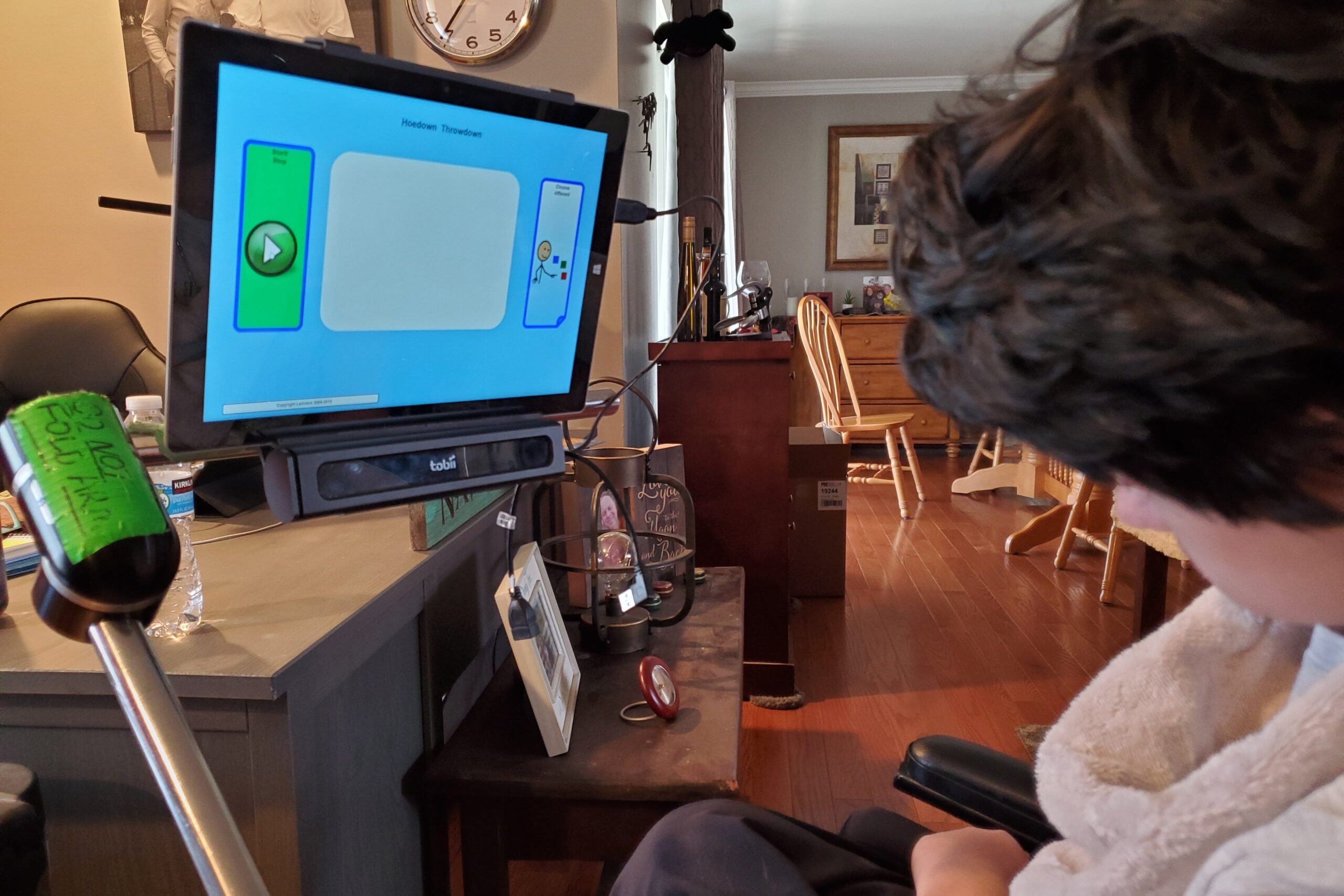
According to Assistive Technology Industry Association (ATIA): Assistive technology (AT) is any item, piece of equipment, software program, or product system that is used to increase, maintain, or improve the functional capabilities of persons with disabilities. These allow people with disabilities to have more independent and active lives. Some examples are positioning equipment, bed rails, bolsters, pillows, wedges, dressing aids, scooters, talking alarms, communication boards, and specialty switches. Anything that helps someone with a disability live and function independently can be assistive technology.
How do I know what to get?
I usually make this decision with our medical team. Mostly when we have gotten equipment, either I researched it or our PT told us about it.
- I researched/saw something
Yes, I am the person who will come up to you at Target and ask what kind of wheelchair you have. If you have something I think might help my daughter, I am shameless in bothering you and getting information. I have learned a lot by doing this. I am also always willing to answer questions for others in return. This is how we learn. Other times, I have read an article or done some research to find out about new ways to make my daughter’s life better.
- PT suggested
We have been very lucky to have exceptional therapists. PTs especially have been helpful in suggesting items. They know what will work for your child because they know your child’s needs and what can help them. They also have seen and used a lot of different assistive technology and know what works. I never hesitated to ask as well.
There is nothing wrong with asking the therapist, “Is there anything we should get at home to help?” Therapists know what is out there and what really works. Our therapists have been great at letting us know if something isn’t worth the hassle of trying to get. Develop a relationship with them and use them to gain knowledge. Ask at school. Ask the therapists or teacher what they use in the classroom because you may get it at home.
- Doctor mentioned
Other times, our specialists have let us know about the equipment we didn’t even know existed. My daughter had bedsores and these sores can lead to serious infections. She ordered an alternating pressure mattress (AT) to use on her hospital bed (DME) to help prevent sores. We have had many positioning aids for seating that were recommended by our Physical Medicine and Rehabilitation doctor.
Who pays for it?
- Medicaid– if your child qualifies for Medicaid, they are great about paying for assistive technology if there is a clear medical use for the device. The therapist must show how the device is necessary and how it enhances the quality of life. Children under 18 can qualify for Medicaid by income or with a waiver. If your child is over 18, they can qualify for Medicaid through Supplemental Security Income (SSI) in most states.
- Early Intervention Programs– “Early Intervention” is services and supports that are available to children and babies with disabilities or developmental delays. Every state has these programs, though they may have different names. To find your state program and eligibility check here. These programs are free or at a low cost for parents. When my daughter used these services, a PT and OT would come to our home once a week to work with her. Sometimes they left devices for us to try or would lend assistive technology for us to use for long periods of time.
- Private Insurance– This coverage will depend on your insurance and there is a wide difference between policies. Your policy should easily cover a wheelchair or bath chair. Anything else will depend on your policy. You will really need to prove medical necessity and some companies will allow items on a “once in a lifetime” basis. It is good practice to understand your policy and check with your provider to see if they have a case manager for complex cases. If they do, sign up for it. These people get to know your child’s needs and can expedite orders.
- Schools- if your child is in public school and needs equipment, then they are probably receiving services from the school. Equipment that is used at school can sometimes come home. My daughter uses a communication board and she can bring it home with her to use. It is not our equipment, but we have access at home to it. We have done this for years because we don’t want insurance to pay for a communication board until we know which one is best. If we can use the school one, there is no need for us to worry about it until she is ready to leave school at age 26.
What do I need to order assistive technology?
The process is like ordering Durable Medical Equipment (DME). If it is expensive, you will need a doctor and a PT or OT to help. You will need a letter of Medical Necessity. You can check out an example on Rifton’s site. The PT or OT will need to explain why the equipment is medically necessary and how the patient’s life is affected by not having the equipment. For example, if a patient cannot sit unassisted, then a bath chair is necessary for bathing. Without a bath chair, the patient would hurt themselves bathing. You must write all justifications for the order in terms of “medical necessity” or they won’t approve it. Ask if you can borrow equipment so you can show why it would be helpful for your child. It can help with justification.
There are also private organizations that can help. Check out the links below to see if any meet your needs.
Muscular Dystrophy Association
Shriners Hospital for Children
UnitedHealthcare Children’s Foundation (Medical Grants)
Variety the Children’s Charity
Chive Charities (help raise both funds and awareness for rare conditions, veterans’ needs, and under-funded special education initiatives)
Independent Living Centers (by state)

